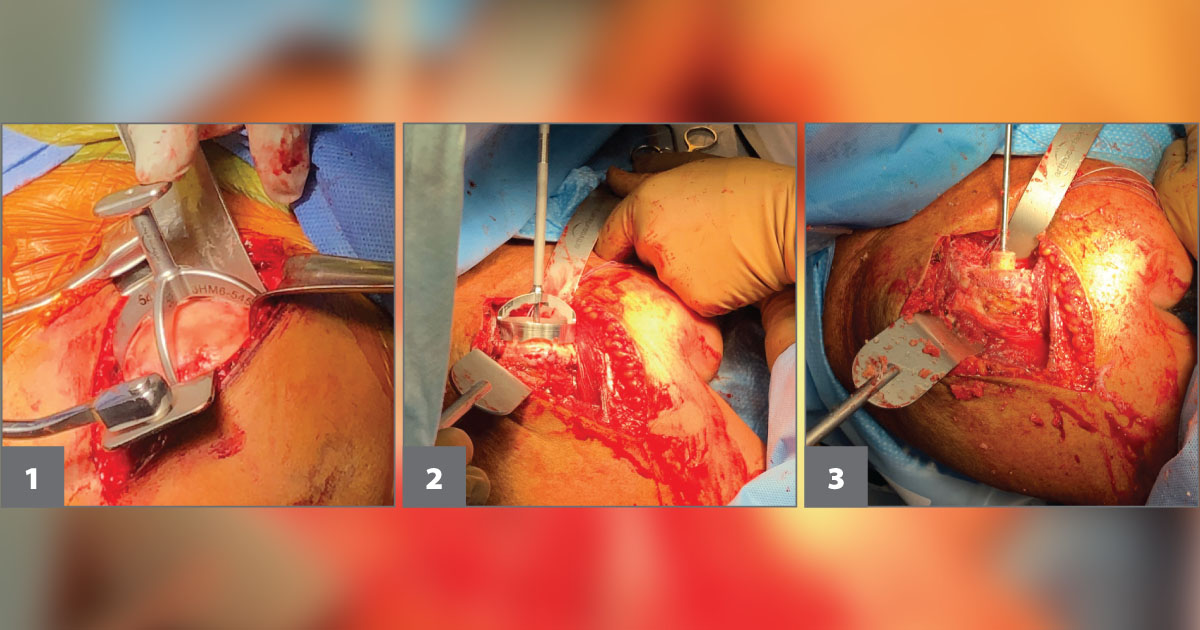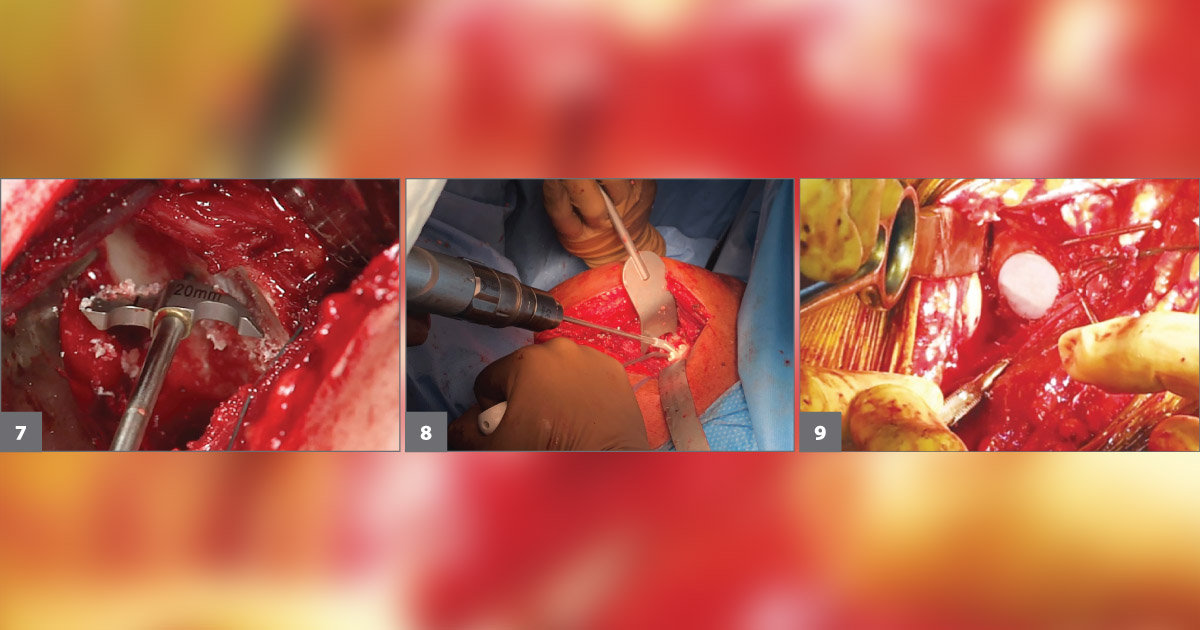Anatomic shoulder replacement may help patients stay active after surgery
Each year, thousands of people turn to a traditional total shoulder arthroplasty or reverse shoulder arthroplasty to alleviate pain without understanding how invasive these procedures can be.
Total shoulder arthroplasty (TSA) or reverse shoulder arthroplasty involve removal of significant amounts of bone and permanent alteration of surrounding joint structures and joint anatomy. Alternatives, such as joint preservation procedures, provide pain relief and quick return to normal activities. Anatomic joint preservation is a viable option for the treatment of clinical conditions, such as avascular necrosis (AVN), Hill-Sachs lesions, post-traumatic degenerative disease, glenohumeral osteoarthritis and inflammatory arthritis.

Source: Arthrosurface
A benefit of restoring the shoulder joint using anatomic joint preservation technology is improved range of motion and restoration of native anatomy. By incorporating an aspherical humeral implant and inlay glenoid implant, OVOMotion used with the Inlay Glenoid Shoulder Arthroplasty System (Arthrosurface) is effective in younger, active patients, as well as in patients with advanced glenohumeral arthritis who present with posterior humeral subluxation and glenoid erosion. Anatomic Shoulder HemiCAP hemiarthroplasty systems (Arthrosurface), which range in size from 25 mm to 40 mm, also may be a solution for patients with smaller arthritic lesions, AVN and Hill-Sachs defects.
Compared with patients treated with traditional TSA, patients with an inlay glenoid implant experience a load-sharing joint and have a significantly less chance of glenoid loosening and of the need for a revision procedure compared with onlay glenoid components, which are associated with loosening and increased soft tissue tension.
Surgical technique
The humeral implant is comprised of an articular cap and fixation component connected by morse taper interlock. The OVOMotion with Inlay Glenoid system avoids overstuffing the joint as it does not alter height, volume or version and it eliminates the rocking horse-effect of other onlay glenoid systems. This minimally invasive procedure preserves bone and results in significantly less blood loss compared with traditional TSA and RSA. The risk of intraoperative complications, such as humeral shaft fractures, is also less. It is ideal as an outpatient procedure and can be done through a minimally invasive approach.
Procedure eligibility
Candidates for shoulder joint preservation surgery include patients with primary or secondary OA, including trauma or inflammatory conditions. The patient’s rotator cuff should be intact or repairable. The humeral head, neck and glenoid vault should have sufficient bone stock to support loading. Gregory L. Cvetanovich, MD, and colleagues found significant improvement in range of motion across glenoid stages A, B and C when the procedure was used for primary TSA.

The device is a single-use implant intended for hemiarthroplasty or to be used in conjunction with the inlay glenoid component for anatomic TSA.
Phase 1
Using a 3/4-inch osteotome and/or rongeur, remove osteophytes around the humeral head. There should be a smooth transition from the humeral neck to the humeral head. Place the appropriate mapping templates over the articular surface and map the surface in the superior/inferior (S/I) and anterior/posterior A/P planes. Use the templates to obtain the S/I diameter that best replicates the anatomy. Select the drill guide and surface reamer based on the (A/P) value. Place the surface reamer on the humeral head to verify the surface reamer size and placement.
With the drill guide or surface reamer as a guide (Figure 1), advance the 2.5-mm guide pin into the bone using a cannulated power drill until the lateral humeral cortex is reached, avoid penetrating the lateral humeral cortex.
Phase 2
Using a power drill, advance the centering shaft over the guide pin until the depth shoulder marking is at the desired height of the articular surface. The centering shaft can be placed slightly proud to compensate for surface flattening of the humeral head. The shoulder of the centering shaft represents the height of the new articular surface and the location of the crown of the implant.

Using the surface reamer that matches the A/P value, advance the surface reamer over the centering shaft until it reaches the stop on the centering shaft (Figure 2, page 4). Repeat this using the access reamer (Figure 3, page 4). Advance the access reamer over the centering shaft until it reaches the stop on the centering shaft or use the sagittal guide to locate the sagittal saw cutting plane. Ensure all reamers are started before engaging the humeral head.
To perform TSA, humeral head instrumentation is removed and retractors are placed to access the glenoid for the designed 30° anterior approach.
Phase 3
Assemble the guide handle onto the preparation trial (Figure 4, page 4). Secure the preparation trial into position using the short guide pins. The pins are critical to maintain the correct orientation of the final implant.
With the preparation trial fixed in place, insert the pilot drill through the center of the guide handle and advance until the laser mark on the pilot drill meets the back of the handle. Leave the pilot drill in place and unscrew and remove the guide handle.
Prior to inserting the taper post, cleanse the pilot hole of any debris and inject the cement in a retrograde fashion from the end of the hole upward.
Phase 4
Load the taper post into the distal end of the guide handle and attach the guide handle to the preparation trial. Place the hex driver through the guide handle and advance the taper post until the stop on the shaft of the driver contacts the back of the guide handle.
Use the alignment gauge to ensure the taper post is seated at the proper depth. The alignment gauge is inserted into the preparation trial and should meet resistance from the taper post and be flush with the edge of the preparation trial. If the gauge sits proud, leave it in place and use the hex driver to rotate it until flush with the trial. If the alignment gauge does not connect with the taper post, then the taper post has been inserted too far into the bone. To address this, rotate the taper post counterclockwise and check placement with the alignment gauge.
Phase 5
Prior to placing the humeral articular component on the implant holder, make sure there is sufficient suction to hold the device onto the distal suction cup. Align the humeral articular component on the implant holder with the etch mark in line with the superior offset of the humeral articular component. Use the implant holder mark to properly align the implant and insert it on the taper of the taper post.
Firmly mallet the impactor until the humeral articular component is completely seated on the taper post (Figure 5, page 4).
Inlay glenoid phase
Use the drill guide to locate the intended implant position on the glenoid surface by positioning the drill guide central to the inferior aspect of the glenoid lesion. Place the guide pin into position and advance it using the drill guide for placement (Figure 6, page 4).
Introduce the inferior glenoid reamer over the guide pin using a 30° angled approach (Figure 7, page 4) and advance it until the depth stop makes contact. To confirm the trial is flush or slightly recessed to the remaining glenoid fossa, place the trial over the guide pin. Then place the flexible peg drill (Figure 8, page 4) into the central hole. Advance it to make a tunnel for the inlay glenoid peg. Using the mallet and angle gouge, create several small cement channels around the periphery of the glenoid fossa. Then apply a small amount of bone cement to the channels and place the glenoid implant into position (Figure 9, page 4). Maintain pressure on the implant until the cement has set. Then remove any excess cement.
Postoperative care
Postoperatively, the patient should be briefed on after-care and monitored to ensure there is reasonable compliance to postoperative instructions and restrictions. The postoperative protocol is specific, although it will vary slightly among practices. The concern is not the new humeral implant or glenoid, but the soft tissues. Patients must allow the soft tissues, especially the subscapularis, to heal. They typically have less postoperative pain and a quick recovery, so they may want to resume their normal activities before full healing occurs.
During rehabilitation, short daily sessions of early and short mobilization sessions done at home are encouraged. When standing, the patient is advised to wear a sling, which can be removed during sitting, resting and sleeping.
The subscapularis is typically detached and reattached during surgery. Therefore, no forced passive abduction/external rotation and no active internal rotation is allowed for 4 weeks. Excessive activity, impact and weight gain have been shown to reduce the benefits and service life of the implants. However, the soft tissues heal postoperatively, patients can return to full normal activities without restrictions.
- References:
- Cvetanovich GL, et al. J Shoulder Elbow Surg. 2019;doi:10.1016/j.jse.2019.10.003.
- Egger AC, et al. JSES Open Access. 2019;doi:10.1016/j.jses.2019.07.009.
- For more information:
- John W. Uribe, MD, a dual board-certified orthopedic surgeon with Miami Orthopedics & Sports Medicine Institute and the Baptist Health Medical Group, can be reached at 709 Alton Road, Suite 440, Miami, FL 33139; email: johnu@baptisthealth.net.
